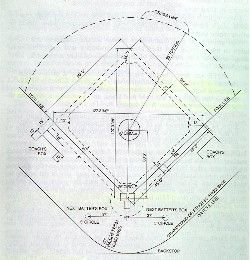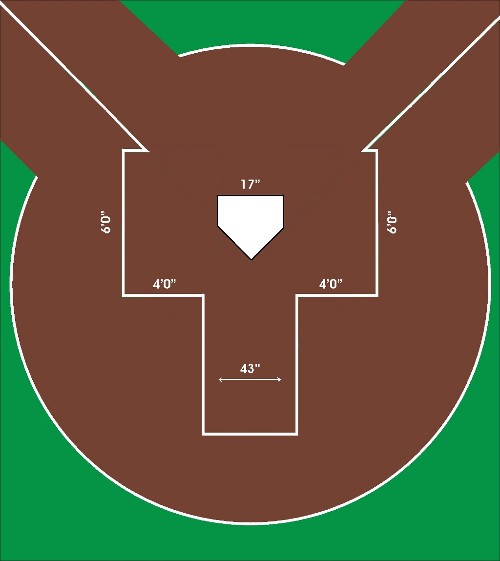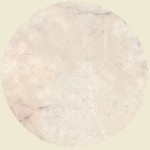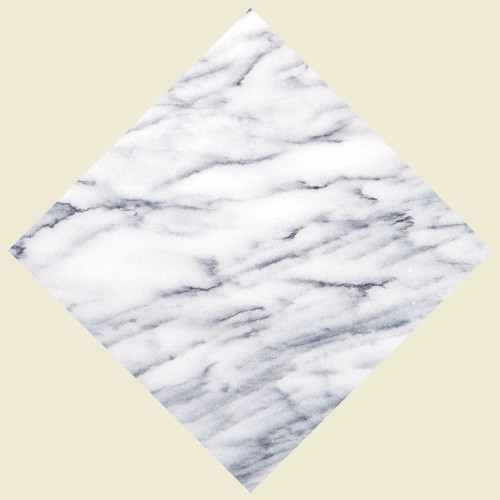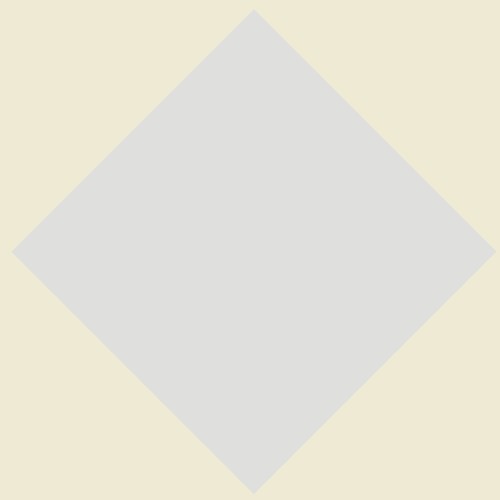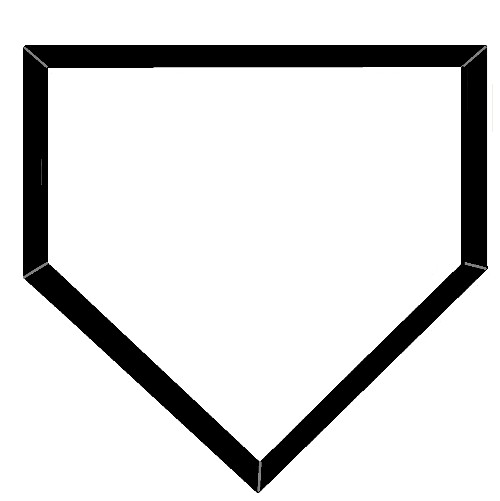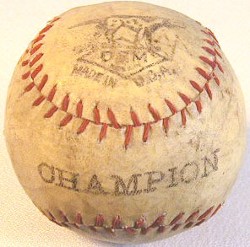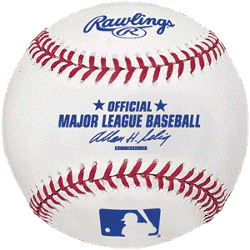To quote the Official Rules of Major League Baseball (Rule 1.04), The field shall be a 90-foot square. The outfield shall be the area between two foul lines formed by extending two sides of the square, as in Diagram 1. Any Playing Field constructed by a professional club after June 1, 1958, shall provide a minimum distance of 325 feet from home base to the nearest fence, stand or other obstruction on the right and left field foul lines, and a minimum distance of 400 feet to the center field fence.
|
|
During the early stages of baseball, home plate was circular in shape. Whatever object was available could and would be used (wood, cast iron, stone, white marble), and sometimes the object was a dish. Thus, the name plate came into use. In 1869 "home base" was transformed into a 12-inch square shape. The square was put into the ground with one point directed towards the pitcher and the opposite point directed toward the catcher. The disadvantage of the square shape was that it was difficult for both the umpires and the pitchers to pinpont the strike zone.
|
|
|
|
There are no records of the number or seriousness of injuries caused to players as they slid across the rugged, marble surface (1866-1885). However, there must have been a significant number because in 1885 the American Association directed that home plate be made of rubber that year; The National League mandated the conversion to a rubber plate two years later (1887).
During the Winter of 1899/1900 The Rules Committee elected to re-design the configuration of home plate, introducing the five-sided figure in use today. This design is a 17" square with the plate's left and right far corners eliminated. The stated intent of the design change was to provide the pitcher with a larger target at which to aim. An unintended side effect provided the umpire with a better view of whether or not the pitch cut the plate.
When the game of baseball was first played, sticks were used to hit the ball. By the time the game had been officially organized as a team sport, the players either whittled their own bats or bought them from a wood turner. They quickly learned that bats with rounded barrels seemed to work the best. Early bats ranged in weight from 48-50 ounces with an average handle circumference of 4.5 inches. Because bats of all shapes and sizes were being used, a rule was made in 1859 that bats could be no larger than 2.5 inches in diameter, although they could be of any length. Ten years later in 1869, another rule was added that stated the baseball bat could be no longer than 42 inches in length - the same maximum length allowed today. At this time there was no rule regarding the shape of the bat. League specifications set were broad: any type of wood was permissible and the bats had to be round, not more than 2.5 inches in the thickest part. There were no length restrictions. The hefty weight meant home runs were rare. By the 1960s, however, players such as Hank Aaron were using shorter, lighter bats to smash balls into the centerfield seats.
|
|
|
|
In the 1890's, the rules committee stated that bats could no longer be sawed off (flat) at the end, they must be round, and the maximum diameter was increased to 2.75 inches. Shortly after 1900, Honus Wagner, one of the great players of all time, became the first player to be paid to have his autograph burned into Louisville Slugger bats. Although bats have continued to develop over the years, wood baseball bats today look similar to the bats of 100 years ago. However, the biggest difference is that bats today are much lighter and have larger barrels and thinner handles. [See Table below for bat comparisons. Note that the trend is to have the ounces number less than the length number.] Additionally, three-fourths ounces of wood is scooped out of the end of the barrel (cupped) to make it lighter and easier to swing.
Modern baseball rules limit bat lengths to 42 inches and the diameter to 2.75 inches. There are no weight restrictions. The bats must be made of wood with no metal, cork, or other type of reinforcement inserted into the bat's center.
|
|
|
|
Traditionally, ash trees from Pennsylvania and upstate New York are used to make baseball bats. The ash is valued for its strength, flexibility, and light weight. The best trees are those that grow in dense clusters where they are protected from the wind and forced to grow straight up towards the sunlight. Forty to fifty years of growth is required to bring an ash tree to the preferred trunk diameter of 14-16 inches (36-41 cm). Each tree yields approximately 60 bats. Recently about 30% of all bat orders are for maple instead of northern white ash.
COMPARING PLAYER'S BAT SIZES
| Player | Years | Length | Weight | Dimension |
|---|---|---|---|---|
| Willie Keeler | 1892-1910 | 30.5 in. | 32 oz. | Smallest MLB Bat Ever |
| Ty Cobb | 1905-1928 | 34 in. | 42 oz. | |
| Joe Jackson | 1908-1920 | 36 in. | 39 oz. | |
| Babe Ruth | 1914-1935 | 36 in. | 42 oz. | Med Handle - Med Barrel |
| Lou Gehrig | 1923-1939 | 34 in. | 39 oz. | Small Handle - Lg Barrel |
| Mickey Mantle | 1951-1968 | 35 in. | 32 oz. | Med Handle - Small Barrel |
| Hank Aaron | 1954-1976 | 35 in. | 33 oz. | Med Handle - Small Barrel |
| Tony Gwynn | 1982-2001 | 33 in. | 30.5 oz. | Small Handle - Med Barrel - Cupped |
| Mark McGwire | 1986-2001 | 34.5 in. | 33 oz. | Small Handle - Lg Barrel - Cupped |
The baseball, in design, has not changed since the rules were set down in 1885. The rules today (1.09) state that the ball shall be a sphere formed by yarn wound around a small core of cork, rubber or similar material, covered with two stripes of white horsehide or cowhide, tightly stitched together. It shall weigh not less than five nor more than 5 1/4 ounces avoirdupois and measure not less than nine nor more than 9 1/4 inches in circumference.
|
|
|
|
|
